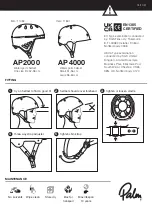
EC / MC / SM 2005 -
111
-
Troubleshooting Improper Settings
Listed below are some symptoms of improper suspension settings
and the most likely means of correcting them.
The proper settings can be achieved by applying the information in
this chapter in a scientific manner. Take time to think about the
changes you believe necessary, check them against the symptoms
and cures described here, and make the changes in small increments,
and take notes on the changes and their effects.
Symptoms of the front fork
- The front fork is too stiff:
1. Incorrect rebound adjustment.
2. The springs are too hard.
3. Too much oil.
4. Oil too dense.
- The fork becomnes hard at the end of travel:
1. The oil level is too high.
- The fork operates but slides hard:
1. Oil too dense.
2. Degraded fork oil.
- Too soft:
The fork shakes excessively when slowing down or applying brakes
1. Fork oil level is low.
2. Springs are too soft.
3. Oil too light.
4. Degraded fork oil.
5. Incorrect rebound or compression.
Symptoms of the rear shock absorber:
- Too hard:
1. The suspension is too stiff
• Compression damping is too high.
• Spring is too hard.
2. Is hard to ride
• Unbalanced condition between the spring and rebound
(too low).
3. The spring is hard or preloaded too much
- Too soft:
On landing after a big jump, the suspension makes jounce stops.
1. Soft spring or compression damping is too soft.
2. Degraded shock absorber oil
Determining the proper settings:
- Standard Settings
From the factory, the machine is set up for an average-weight rider
with average riding abilities. Hence, if the actual rider’s weight or if
his riding experience and abilities are considerably superior or below
the average, ii is necessary to make adjustments to the suspension.
- Readjustment of the suspension:
Ground surface
Smooth
soft spring
Rough
hard spring
















































